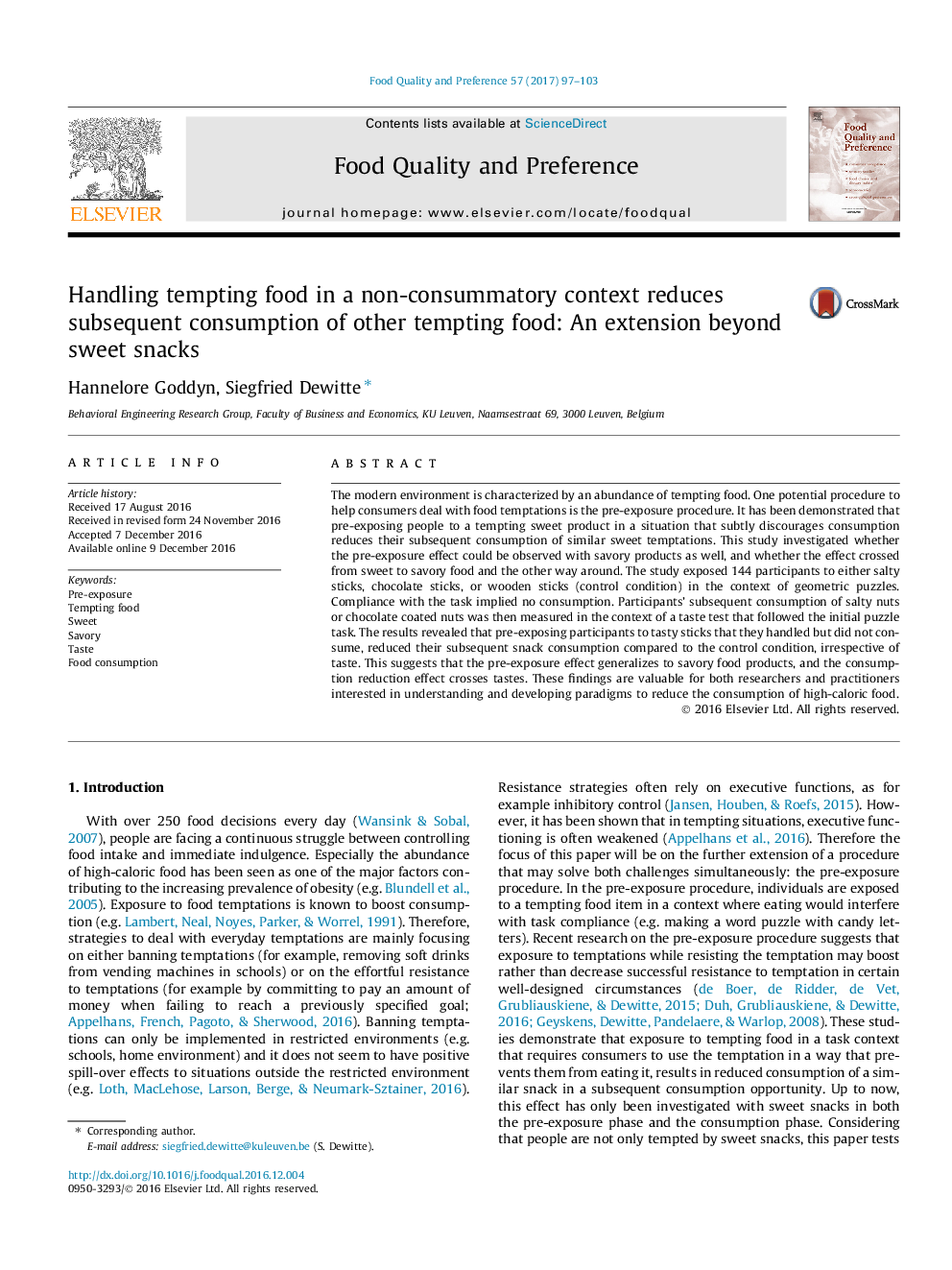| کد مقاله | کد نشریه | سال انتشار | مقاله انگلیسی | نسخه تمام متن |
|---|---|---|---|---|
| 5736067 | 1613143 | 2017 | 7 صفحه PDF | دانلود رایگان |
- Pre-exposure to food temptation reduces subsequent food consumption.
- The taste similarity of the pre-exposure effect is explored.
- The pre-exposure effect is not taste specific.
The modern environment is characterized by an abundance of tempting food. One potential procedure to help consumers deal with food temptations is the pre-exposure procedure. It has been demonstrated that pre-exposing people to a tempting sweet product in a situation that subtly discourages consumption reduces their subsequent consumption of similar sweet temptations. This study investigated whether the pre-exposure effect could be observed with savory products as well, and whether the effect crossed from sweet to savory food and the other way around. The study exposed 144 participants to either salty sticks, chocolate sticks, or wooden sticks (control condition) in the context of geometric puzzles. Compliance with the task implied no consumption. Participants' subsequent consumption of salty nuts or chocolate coated nuts was then measured in the context of a taste test that followed the initial puzzle task. The results revealed that pre-exposing participants to tasty sticks that they handled but did not consume, reduced their subsequent snack consumption compared to the control condition, irrespective of taste. This suggests that the pre-exposure effect generalizes to savory food products, and the consumption reduction effect crosses tastes. These findings are valuable for both researchers and practitioners interested in understanding and developing paradigms to reduce the consumption of high-caloric food.
Journal: Food Quality and Preference - Volume 57, April 2017, Pages 97-103
